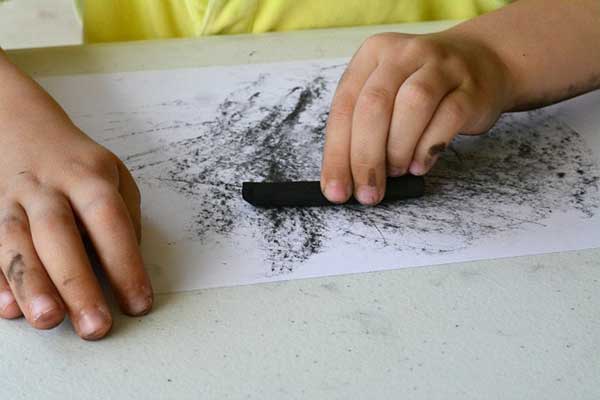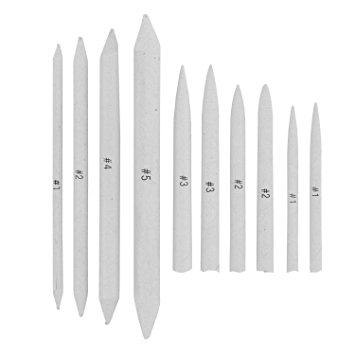Charcoal Studio Exploration
Quality
3 Types of Charcoal
1.) Compressed Charcoal (pencil)
Powdered charcoal that is mixed together with gum/binder
The amount of binder used – determines the softness or hardness of the charcoal
B = Soft Charcoal HB = Medium CharcoalH = Hard Charcoal9 H = Hardest 9B = Softest
Compressed charcoal can come in a pencil form or can come without a casing
According to Nitram Fine Art Charcoal, “for artists, 2B graphite provides a good range of grayscale values and blend-ability, but there are times when something lighter, crisper and shaper is needed, so the artist will select something in the H range. When darker is desired, an artist will choose something higher in the B range.”
It’s smart to work from softest (B) to hardest (HB or H) when using charcoal
2.) Willow/Vine Charcoal
Made by burning pieces of wood
Like compressed charcoal – vine charcoal varies in softness and hardness
3.) Powdered charcoal
- Loose powder form used for covering large areas or for the initial layer
Brands
There is not a significant difference between the different qualities/brands. It is important to keep in mind the different types of charcoal.
Lower Quality
- Artist’s Loft charcoal
Medium Quality
- Blick Charcoal
- General’s Charcoal Drawing Assortment
High Quality
- Prismacolor
- Cretacolor Noir Drawing Charcoal 11 Piece Set
- Winsor & Newton Charcoal
Age Appropriateness
Not appropriate for young children – due to the messiness
Best to keep it 3rd grade and up. Introducing more of a variety of charcoal to middle school and up.

Additional Resources to Consider
- Erasers: Different degrees of thickness, Gum eraser
- Surface – paper
- Tape and a drawing board to make the artmaking process easier
- Blending tools besides finger – smuging tool: different degree of thickness, paper towels, soft paint brush, rag, Q tip

- White charcoal for highlighting
- Fixative spray and proper storing for longevity
- Cleaning supplies and proper safety precautions: wet cloth, charcoal should never be swept – dust mask in certain cases could be necessary
- Pencil sharpener for charcoal pencils
Charcoal Basics
Limitations
Vine charcoal is very messy and delicate
- Charcoal is very easy to break and shatter – compressed charcoal is not as fragile as vine, but is it not as easy to blend
- Not always a lot of control with charcoal
- Not all charcoal is nontoxic and it should never be digested
Safety:
- Cleaning should be done with a wet cloth or mop – never swept up
- Excess should be tapped off – not blown
Strengths
- Low costing
- Easy to blend
- Charcoal produces a darker, richer value in comparison to graphite.
- Soft charcoal – the easiest to draw and sketch with
- Harder charcoal – good for harsh lines and details, not as easy to manipulate
- There are many types of charcoal to work with
- Diverse medium
How to sketch with charcoal
Personal Comfort Level
I have not worked with charcoal since college and it is certainly not my strongest medium. When I drew more often I preferred graphite with charcoal detailing.
I would have to experiment more in order to be fully comfortable teaching this medium.







